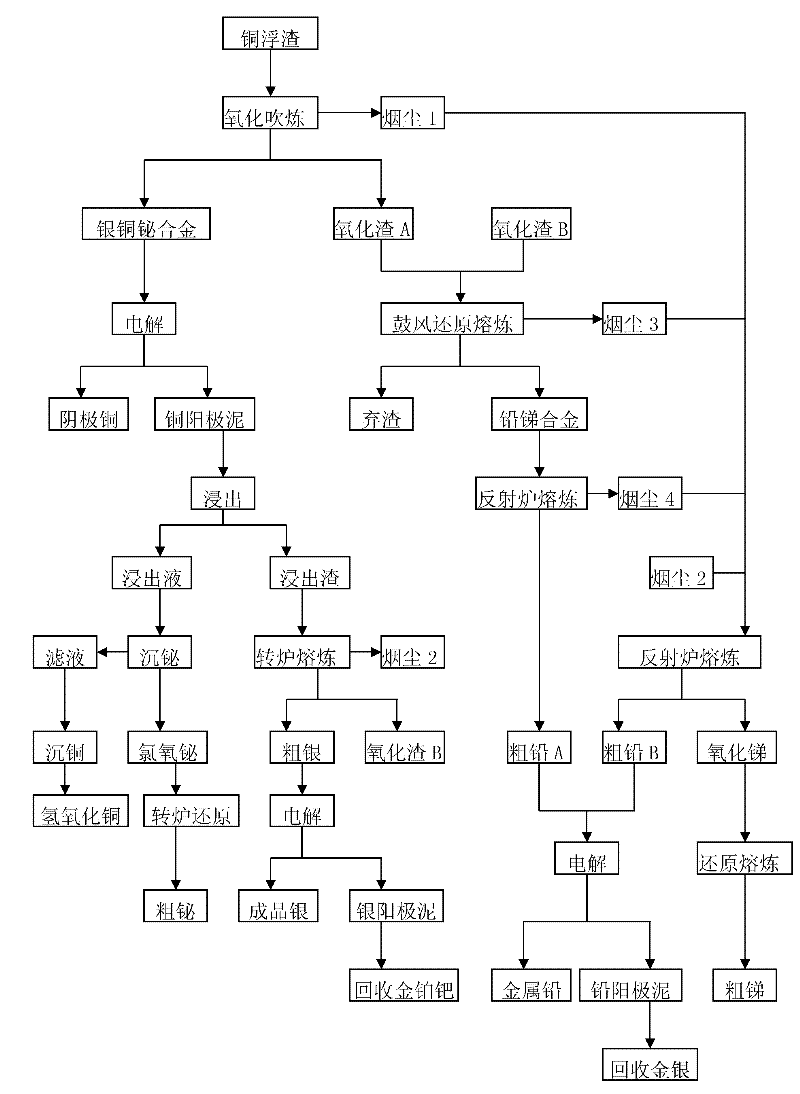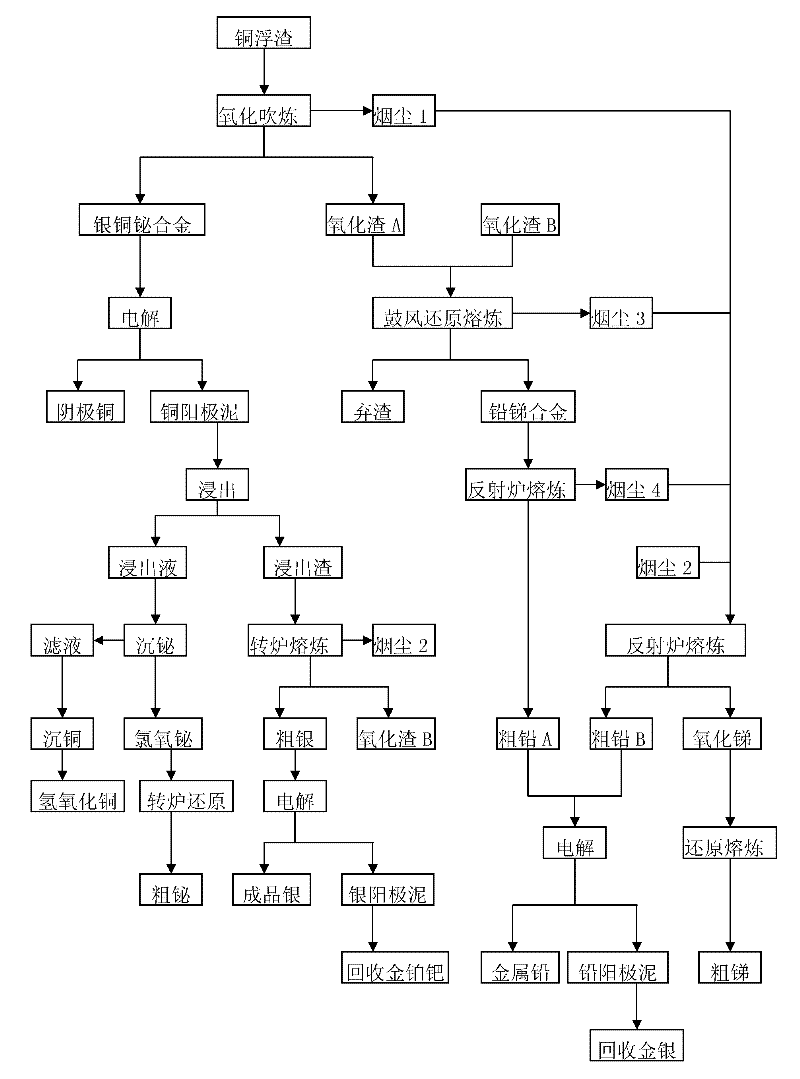Copper scum smelting process
A smelting method and technology for copper scum, applied in the smelting field of precious metals, can solve the problems of high environmental protection pressure, high copper recovery rate, low copper recovery rate, etc. Effect
- Summary
- Abstract
- Description
- Claims
- Application Information
AI Technical Summary
Problems solved by technology
Method used
Image
Examples
Embodiment 1
[0014] 12 tons of copper dross raw materials, its composition is: silver 1.5wt%, copper 36.5wt%, lead 32wt%, antimony 16wt%, bismuth 3.2wt%, tellurium 0.3wt%, gold 30g / T.
[0015] (1) Add copper scum into the smelting furnace, oxidize blowing at 700-1200°C, add sodium carbonate to remove antimony, add silicon to remove lead, most of the lead and antimony enter the soot 1 and oxide slag A, while gold, silver, copper, bismuth and tellurium Into the alloy, a silver-copper-bismuth alloy is formed, which is cast directly into a copper anode plate. The components of the copper anode plate are: copper 82wt%, silver 3.4wt%, bismuth 7.18wt%, tellurium 0.62wt%, gold 68g / T, lead 3.5wt%, antimony 1.6wt%.
[0016] (2) Electrolyze the silver-copper-bismuth alloy to produce cathode copper, metals such as gold, silver, bismuth and tellurium are enriched into the copper anode slime, and the copper anode slime is leached with dilute hydrochloric acid with a pH of 0.5, and the leaching solution ...
Embodiment 2
[0023] 18 tons of copper scum raw materials, its composition is: silver 0.5wt%, copper 20wt%, lead 45wt%, antimony 21wt%, bismuth 2.5wt%, tellurium 0.3wt%, gold 18g / T.
[0024] (1) Add copper scum into the smelting furnace, oxidize blowing at 700-1200°C, add sodium carbonate to remove antimony, add silicon to remove lead, most of the lead and antimony enter the soot 1 and oxide slag A, while gold, silver, copper, bismuth and tellurium Into the alloy, a silver-copper-bismuth alloy is formed, which is cast directly into a copper anode plate. The components of the copper anode plate are: copper 81.5wt%, silver 2.1wt%, bismuth 10.4wt%, tellurium 1.1wt%, gold 76g / T, lead 3.0wt%, antimony 1.8wt%.
[0025] The following steps are the same as steps (2) to (6) of Example 1.
[0026] After the copper dross is smelted by the smelting method of this embodiment, the direct yield of gold is 99.2%, the direct yield of silver is 99%, and the yield of copper, bismuth, lead and antimony is 98%...
PUM
 Login to View More
Login to View More Abstract
Description
Claims
Application Information
 Login to View More
Login to View More - R&D
- Intellectual Property
- Life Sciences
- Materials
- Tech Scout
- Unparalleled Data Quality
- Higher Quality Content
- 60% Fewer Hallucinations
Browse by: Latest US Patents, China's latest patents, Technical Efficacy Thesaurus, Application Domain, Technology Topic, Popular Technical Reports.
© 2025 PatSnap. All rights reserved.Legal|Privacy policy|Modern Slavery Act Transparency Statement|Sitemap|About US| Contact US: help@patsnap.com


